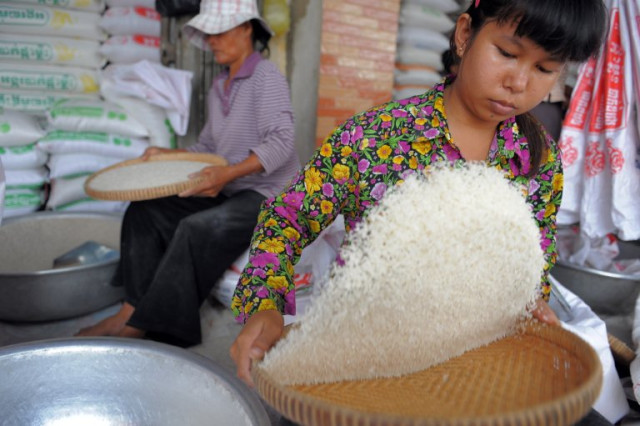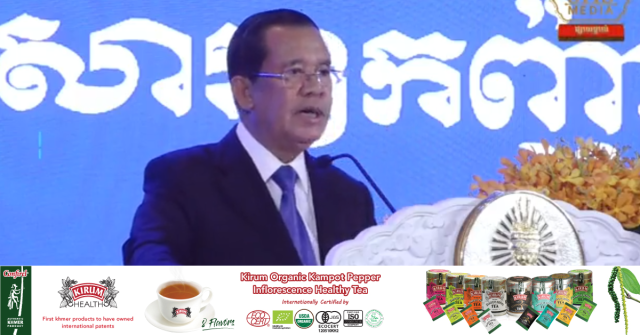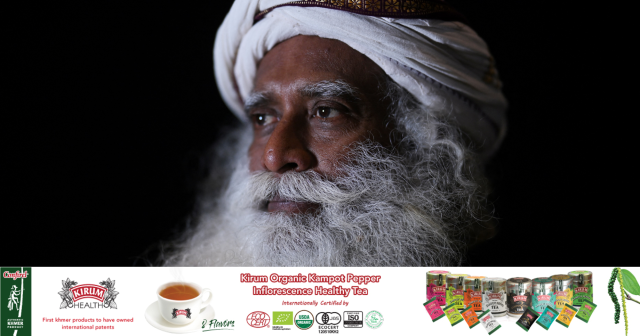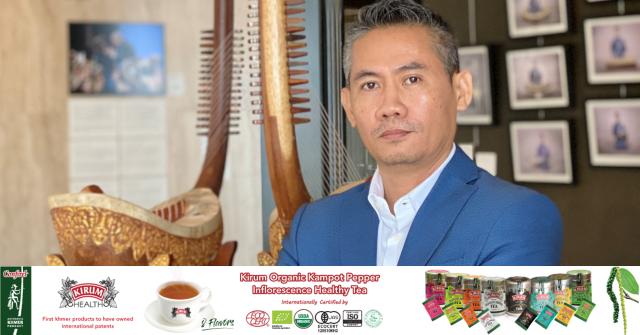Gloomy and Soaky, the Beng Mealea Temple Emerges in all its Hidden Beauty
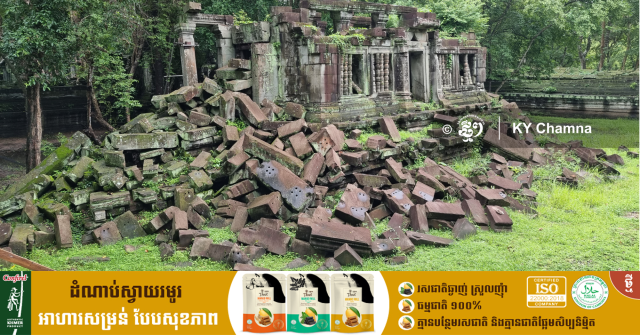
- By Ky Chamna
- September 17, 2023 7:00 PM
SIEM REAP — It was around three o’clock in the afternoon and a thick translucent misty blanket had been spreading over the sky for several hours. Rain was about to dampen the soil of the villages and the farmlands once more. This was a typical day in Siem Reap province as in other parts of Cambodia during the rainy season.
As wet and soaky as it was, motorbikes appeared frequently along the narrow asphalt and concrete road, which led to and from the temple of Beng Mealea.

With raincoats tugged around their bodies and small baskets attached to the rear of their motorbikes, villagers carried out their daily routine of transporting goods despite the drop in visibility. A simple yellowish headlight at the front informed other drivers that they were coming from the opposite direction.

A temple seemingly transformed during the monsoon
Although the structures themselves have an indisputable beauty of their own, the absence of their natural settings may render the temples less attractive today.
Around 60 kilometres northeast of the provincial city of Siem Reap lies a group of temples, with Beng Mealea being the largest and most recognizable. This Hindu temple was constructed in the 12th century during the reign of King Suryavarman II.

As stated in the file that Cambodia submitted to UNESCO to include the temple on the World Heritage List, Beng Mealea was a meeting place at the crossroad of east-west and north-south routes, where products from nearby Kulen mountain, the neighbourhoods, the Tonle Sap lake and even foreign lands were negotiated and exchanged.
With stone lions standing at the entrance of its causeway, this mountain temple features a moat surrounding it, a terrace supported by columns and enclosure galleries. It is believed to combine mountain-temple themes of the early and middle periods of Khmer art across centuries.

On that rainy day, stopping at one of the temple’s parking lots, which was a simple flattened part of the land surrounded by trees, meant the car tyres slightly sinking into the mud as rain kept pouring.
Greeted by the temple guards in simple t-shirts sitting on plastic chairs under the commonly-seen plastic umbrellas, visitors kept walking through the impressive entryway with the uneven ground full of hundreds, if not thousands, of cuboid-shaped stones sometimes lifted upward by the strength of tree roots. Stone handrails, on each side, sculpted in the shape of nagas, are so lengthy and so heavy that, in the course of the centuries, the supporting pillars below have slightly given way, unable to fully support the weight.

When the downpour temporarily died down, rain seemed to keep on falling as tree branches swung in the wind, releasing droplets from their leaves.
The temple’s moat—a 1,200-by-900-metre ring of water whose practical and religious purpose was to protect and support the monument, has turned into a green soup of algae and willow trees. One can hardly see where the edge of the water starts or ends.

Sometimes, large trees get most of the credit. Yet, upon a more emphasised look, layers after layers of moss covering each stone, bas-reliefs, door frames, pediments, lintels and many more is the living natural artist who expresses the green colour gently from day to day.
Being at the Beng Mealea temple during a downpour may feel like being a lone microorganism roaming around a small pocket of pond water.

Even though transportation can be challenging in the rain, groups of Western tourists were visiting the temple with a Cambodian tour guide who was explaining the history of the period and facts about the monument.
Rocks found and piled on the temple grounds have puzzled researchers and people in general. Without stone inscriptions from the era, figuring out their original purpose may prove difficult, if not impossible.

Wooden chairs have been set up in some corners as well as along the huge wall so that, when it is not pouring, visitors can sit down and relax in the compound of this gigantic temple.
But on this rainy day, everyone had to make sure not to step on the extremely slippery rocks on the ground.
Still, whether sunny or raining, visitors can always conclude their tour with refreshments such as coconut juice in the nearby village right next to the temple.






